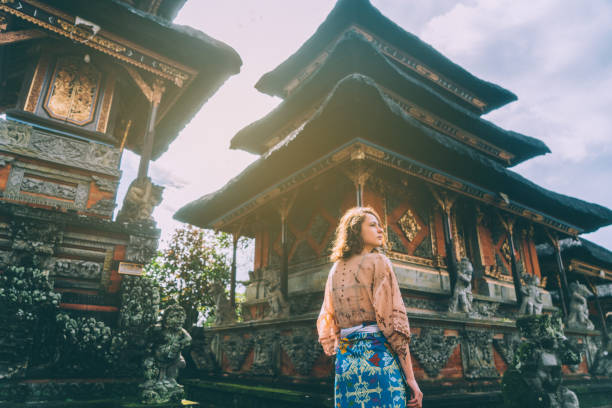Bali architecture comes from an exotic location where few people wouldn’t want to escape, and it is a unique and almost mystical blend of vibrant colors, natural materials, and fine craftsmanship. Aesthetics and ideologies, which originated on the “island of the gods,” are thriving in many beautiful homes and places all over the world.

Due in large part to Bali’s booming tourism industry, which has increased demand for homes, hotels, cottages, and villas in the Balinese style, the contemporary Balinese style is currently regarded as one of the most popular tropical Asian architectural styles. The legendary artistry and craftsmanship of its people, the wealth of natural materials on the island, and traditional aesthetic principles. As well as influences from other countries, new methods, and fashions, are all combined in contemporary Bali architecture design.
The Concepts of Bali Architecture
This building’s concepts are based on Hinduism, spatial planning, and social ties that are built on communities. These 7 concepts serve as the foundation of a Balinese-designed structure:
Tri Hita Kirana
The concept with traditional meaning for Bali island life. The literal translations are “Conditions for happiness” or “Three elements with well”. The following three causes are mentioned in the principle:
- Harmony with God
- Harmony between people
- Harmony with environment
Tri Mandala
The guidelines for zoning and space division. Three separate realms are described by the tri mandala spatial concept:
- Nista Mandala, the outer and lower common less-sacred region is known.
- Madya Mandala, the middle region.
- Utama Mandala, The inner and most significant sacred area is known.
Sanga Mandala
The zoning and division of space regulations. The Sanga Mandala is a geographic concept that splits an area into nine sections based on the eight principal cardinal directions and the center (zenith). These nine cardinal directions are related to the Hindu concept of Dewata Nawa Sanga, or the nine guardian gods of the directions, who are shown in the Surya Majapahit emblem of the Majapahit Empire. They do:
- Center: Shiva
- East: Isvara
- West: Mahadeva
- North: Vishnu
- South: Brahma
- Northeast: Sambhu
- Northwest: Sangkara
- Southeast: Mahesora
- Southwest: Rudra.
Angga Tri
The idea behind hierarchy is:
- Microcosm, refers to the small order or small universe, a historical theory that suggested that humans and other living things have structural similarities
- Middle sphere
- Macrocosm, refers to the large order or the great universe, a historical theory that suggested that human beings and other living things have structural similarities
Tri Loka
Another term for the idea of hierarchy among the three realms:
- (Sanskrit: bhurloka), Lower realm of animals and devils
- (Sanskrit:bhuvarloka), The human intermediate realm
- (Sanskrit: svarloka), Upper realms of gods and goddesses
Asta Kosala Kosali
The eight rules for architectural designs, include the forms of niyasa (symbols) in pelinggih (shrine) and pepalih (stages). As well as their measuring units, shapes, and sizes, and specify the proper ornament.
Kaja Kelod or Arga Segar
The mystical axis is between Arga or Kaja ( mountains) and Segara or Kelod (sea). The sea is said to be the domain of sea monsters and demons. Whereas the center plain in between is where humans live. Mountains are thought to be the parahyangan, the home of Hyang or gods.